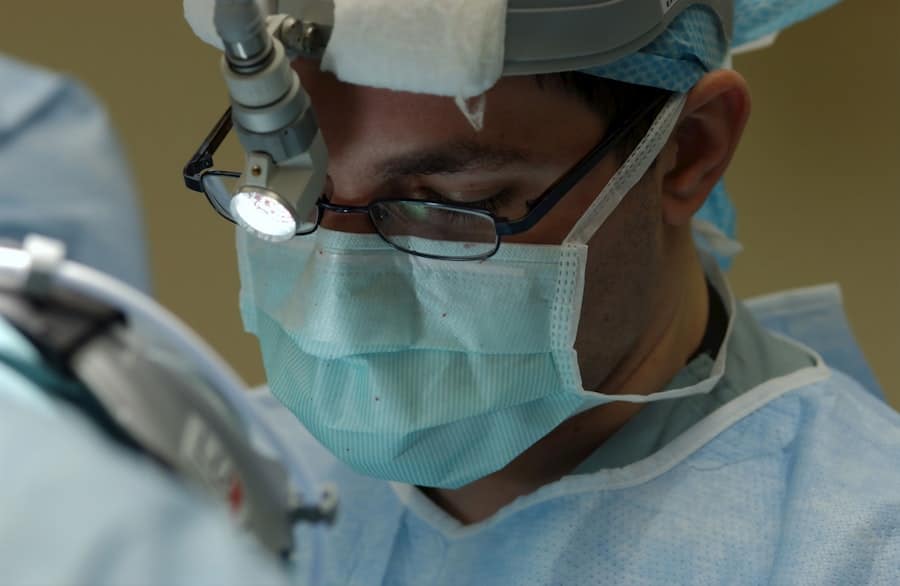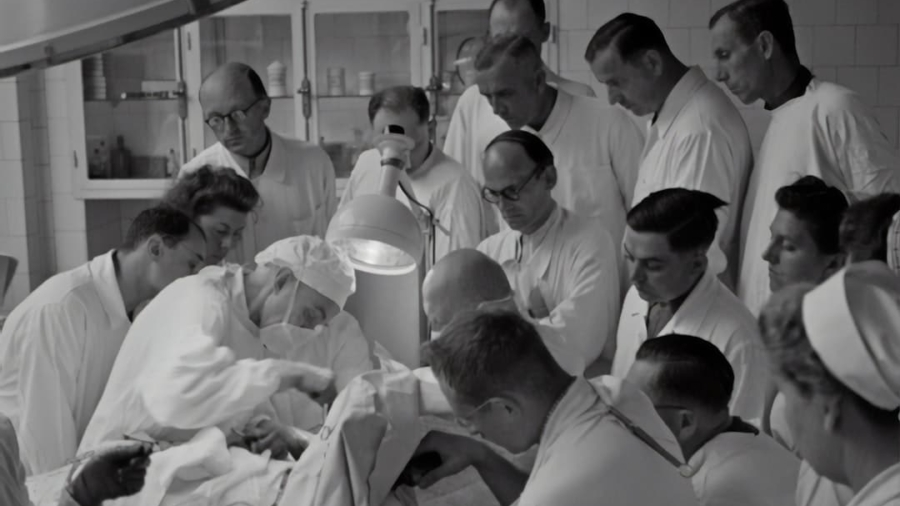The advent of 5G technology marks a significant leap in telecommunications, promising to revolutionize how data is transmitted and received across various sectors. Unlike its predecessors, 5G offers unprecedented speed, reduced latency, and the ability to connect a vast number of devices simultaneously. This next-generation network operates on higher frequency bands, enabling faster data transfer rates that can reach up to 10 gigabits per second.
The implications of such advancements extend far beyond mere convenience; they have the potential to transform industries, particularly healthcare, by enhancing diagnostics, treatment methodologies, and patient care. 5G technology is characterized by its three primary features: enhanced mobile broadband, ultra-reliable low-latency communication, and massive machine-type communications. Enhanced mobile broadband allows for high-speed internet access, which is crucial for applications requiring large data transfers, such as high-resolution imaging.
Ultra-reliable low-latency communication is essential for real-time applications, where even milliseconds can make a difference, such as in remote surgeries. Lastly, massive machine-type communications enable the connection of numerous devices simultaneously, facilitating the Internet of Medical Things (IoMT), where medical devices can communicate seamlessly with healthcare systems. This interconnectedness is poised to create a more efficient and responsive healthcare ecosystem.
Key Takeaways
- 5G technology is the next generation of wireless communication that promises faster speeds, lower latency, and increased connectivity for various industries including healthcare.
- Advantages of 5G in healthcare diagnostics include improved data transfer for medical imaging, remote monitoring of patients, and real-time access to patient records, leading to faster and more accurate diagnoses.
- Remote surgery with 5G technology enables surgeons to perform procedures from a distance with minimal latency, allowing for greater precision and access to specialized expertise in real time.
- Telemedicine, powered by 5G, facilitates virtual consultations, remote patient monitoring, and the delivery of healthcare services to underserved areas, improving access to care for patients.
- Challenges and concerns of 5G in healthcare include cybersecurity risks, data privacy issues, and the need for infrastructure investment, as well as potential health effects of prolonged exposure to 5G radiation.
Advantages of 5G in Healthcare Diagnostics
Enhanced Data Transmission
One of the most notable benefits is the ability to transmit large volumes of data quickly and efficiently. For instance, high-resolution medical imaging, such as MRI or CT scans, generates substantial amounts of data that need to be processed and analyzed. With 5G’s high-speed capabilities, these images can be uploaded to cloud-based systems almost instantaneously, allowing radiologists and specialists to access and interpret them without delay.
Real-time Data Analysis and Monitoring
This rapid access to diagnostic information can lead to quicker decision-making and treatment initiation. Moreover, the low latency associated with 5G technology facilitates real-time data analysis and monitoring. In scenarios where timely intervention is critical, such as in emergency medicine or critical care settings, the ability to receive immediate feedback from diagnostic tools can be life-saving.
Improved Patient Safety and Efficiency
For example, wearable devices that monitor vital signs can transmit data in real-time to healthcare providers, enabling them to respond promptly to any abnormalities. This capability not only enhances patient safety but also improves the overall efficiency of healthcare delivery by reducing the time spent on diagnostics and increasing the time available for patient interaction.
Remote Surgery and 5G Technology

Remote surgery represents one of the most groundbreaking applications of 5G technology in healthcare. The ability to perform surgical procedures from a distance relies heavily on the ultra-reliable low-latency communication that 5G provides. Surgeons can operate robotic surgical systems in real-time, even if they are located miles away from the patient.
This capability is particularly beneficial in rural or underserved areas where access to specialized surgical expertise may be limited. By leveraging 5G networks, hospitals can connect with top-tier surgeons who can guide or perform surgeries remotely, thereby expanding access to high-quality care. The precision required in remote surgery necessitates a seamless connection between the surgeon’s controls and the robotic instruments.
Any delay or disruption in communication could have dire consequences during a procedure. 5G’s low latency ensures that commands are executed almost instantaneously, allowing for smooth and precise movements of surgical instruments. For instance, during a laparoscopic procedure, a surgeon can manipulate robotic arms with minimal delay, mirroring their movements in real-time.
This level of control not only enhances surgical outcomes but also instills greater confidence in both patients and healthcare providers regarding the safety and efficacy of remote surgical interventions.
Telemedicine and 5G
Telemedicine has gained significant traction in recent years, particularly accelerated by the COVID-19 pandemic. The integration of 5G technology into telemedicine platforms enhances the quality and accessibility of virtual healthcare services. With 5G’s high-speed internet capabilities, healthcare providers can conduct high-definition video consultations without interruptions or lag.
This improvement is crucial for maintaining effective communication between patients and providers, as visual cues play an essential role in clinical assessments. Additionally, 5G enables the use of advanced diagnostic tools during telemedicine consultations. For example, patients can use connected devices to perform tests at home—such as blood pressure monitors or glucose meters—and transmit the results directly to their healthcare providers in real-time.
This capability allows for more comprehensive virtual visits where providers can analyze data on-the-fly and make informed decisions about patient care without requiring an in-person visit. The convenience of telemedicine powered by 5G not only improves patient satisfaction but also reduces the burden on healthcare facilities by minimizing unnecessary visits.
Challenges and Concerns of 5G in Healthcare
Despite its numerous advantages, the implementation of 5G technology in healthcare is not without challenges and concerns. One significant issue is the need for substantial infrastructure investment. Upgrading existing networks to support 5G requires significant financial resources and time, which may pose a barrier for many healthcare institutions, particularly smaller facilities or those in rural areas.
The disparity in access to advanced technology could exacerbate existing inequalities in healthcare delivery. Another concern revolves around data security and privacy. As healthcare systems become increasingly interconnected through 5G networks, the risk of cyberattacks also rises.
Sensitive patient information transmitted over these networks could be vulnerable to breaches if adequate security measures are not implemented. Ensuring compliance with regulations such as HIPAA (Health Insurance Portability and Accountability Act) becomes paramount as healthcare organizations adopt new technologies. The challenge lies in balancing innovation with robust security protocols to protect patient data while leveraging the benefits of 5G.
Future Possibilities of 5G in Healthcare

Enhancing Medical Training and Education
One potential development is the expansion of augmented reality (AR) and virtual reality (VR) applications in medical training and patient education. With 5G’s high bandwidth and low latency, immersive simulations could become commonplace in medical education, allowing students to practice complex procedures in a risk-free environment.
Personalized Medicine Approaches
Furthermore, the integration of artificial intelligence (AI) with 5G technology could lead to more personalized medicine approaches. AI algorithms can analyze vast amounts of data collected from various sources—such as electronic health records (EHRs), wearable devices, and genomic information—to provide tailored treatment recommendations for individual patients.
Real-time Insights for Better Patient Outcomes
The speed at which this data can be processed through 5G networks will enable healthcare providers to make timely decisions based on real-time insights, ultimately improving patient outcomes.
Case Studies of 5G in Healthcare Diagnostics and Remote Surgery
Several case studies illustrate the transformative impact of 5G technology on healthcare diagnostics and remote surgery. One notable example is the collaboration between Verizon and Mount Sinai Health System in New York City. They implemented a 5G network within Mount Sinai’s facilities to enhance telehealth services and remote monitoring capabilities.
The results demonstrated improved patient engagement and satisfaction due to faster response times and seamless communication between patients and providers. In another instance, a pioneering remote surgery was conducted by a team at the University of California, Los Angeles (UCLA) using 5G technology. Surgeons performed a laparoscopic procedure on a patient while being physically located miles away from the operating room.
This groundbreaking procedure showcased not only the feasibility of remote surgeries but also highlighted the potential for expanding access to specialized surgical care across geographical barriers.
Conclusion and Recommendations for Implementing 5G in Healthcare
As healthcare continues to evolve with technological advancements, implementing 5G technology presents both opportunities and challenges that must be navigated carefully. To maximize its benefits while addressing potential concerns, healthcare organizations should prioritize strategic planning for infrastructure upgrades that align with their specific needs and capabilities. Collaborating with telecommunications providers can facilitate smoother transitions to 5G networks while ensuring that security measures are integrated from the outset.
Moreover, ongoing education and training for healthcare professionals are essential as new technologies emerge. Ensuring that staff are well-versed in utilizing advanced tools enabled by 5G will enhance their ability to provide high-quality care effectively. Finally, fostering partnerships between technology developers, healthcare providers, and regulatory bodies will be crucial in creating a framework that supports innovation while safeguarding patient privacy and security as we move toward a more connected future in healthcare.
The Impact of 5G on Healthcare Diagnostics and Remote Surgery is a groundbreaking article that explores the potential of 5G technology in revolutionizing healthcare practices. With the ability to transmit data at lightning-fast speeds, 5G has the potential to greatly improve remote surgery and diagnostic procedures. For those interested in staying ahead of the curve in technology, the article The Best HP Laptop 2023 provides valuable insights into the latest laptop models. Additionally, for students looking to invest in a new laptop, the article How to Choose Laptop for Students offers helpful tips and recommendations. Lastly, for those interested in affiliate marketing on Facebook, the article The Best Niches for Affiliate Marketing in Facebook provides valuable information on how to succeed in this competitive field.
FAQs
What is 5G?
5G is the fifth generation of wireless technology for digital cellular networks. It promises significantly faster data download and upload speeds, wider coverage, and more stable connections.
How does 5G impact healthcare diagnostics?
5G enables healthcare providers to transmit large medical imaging files, such as MRIs and CT scans, quickly and efficiently. This allows for faster and more accurate diagnoses, leading to improved patient outcomes.
What is remote surgery and how does 5G impact it?
Remote surgery, also known as telesurgery, involves a surgeon performing a procedure on a patient who is located in a different physical location. 5G’s low latency and high bandwidth make it possible for surgeons to perform complex procedures remotely with minimal delay, enhancing access to specialized care for patients in remote areas.
How does 5G improve telemedicine?
5G enables high-quality, real-time video consultations between patients and healthcare providers, regardless of their locations. This improves access to healthcare services, especially for individuals in rural or underserved areas.
What are the potential challenges of implementing 5G in healthcare?
Challenges of implementing 5G in healthcare include ensuring data security and privacy, managing the costs of upgrading infrastructure and devices, and addressing potential health concerns related to prolonged exposure to electromagnetic radiation.

